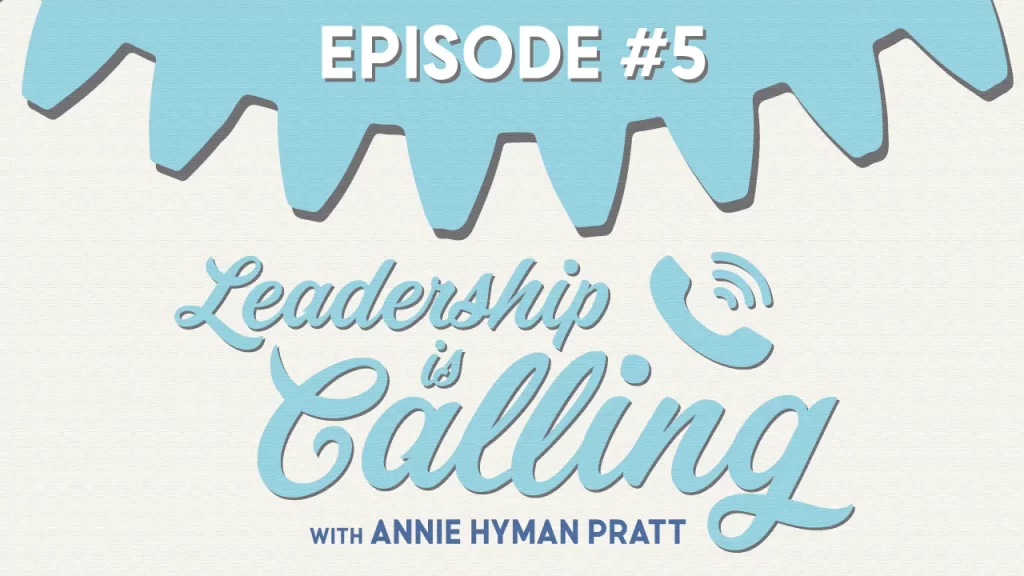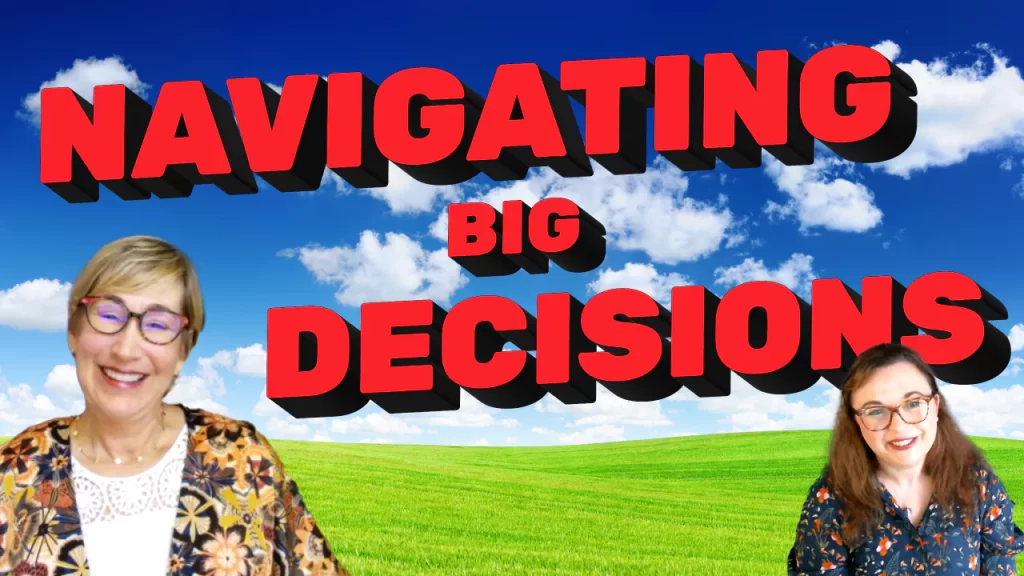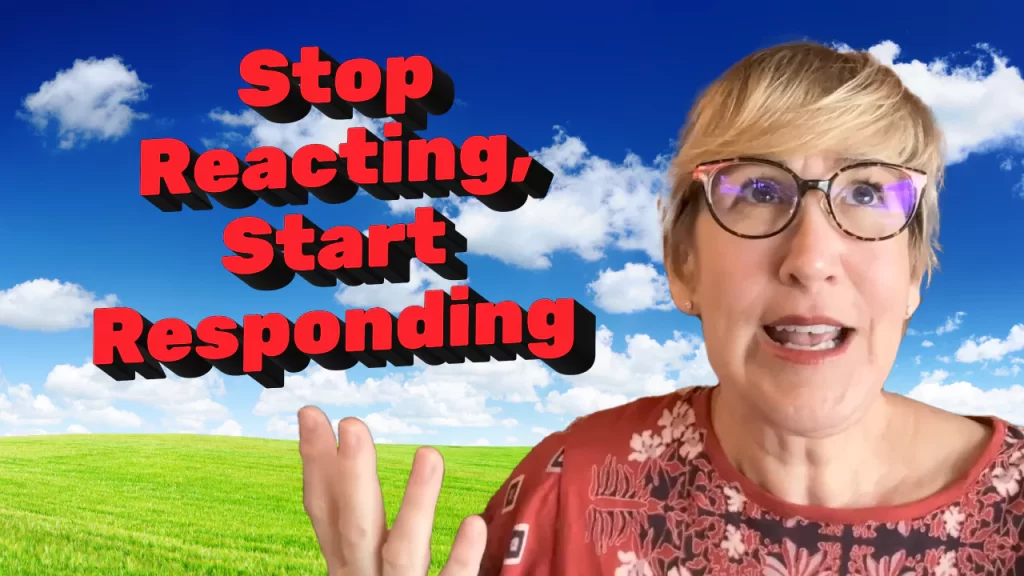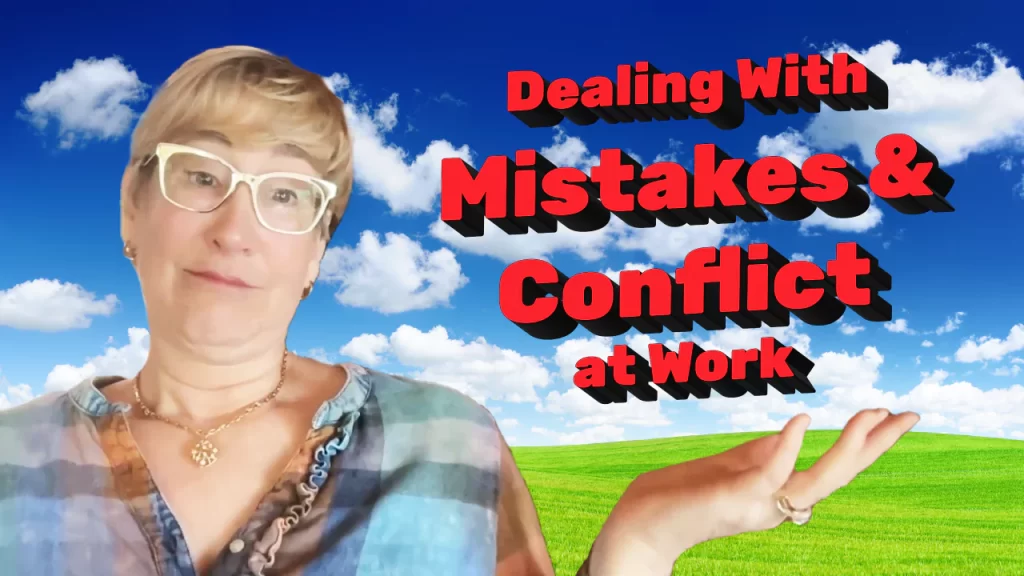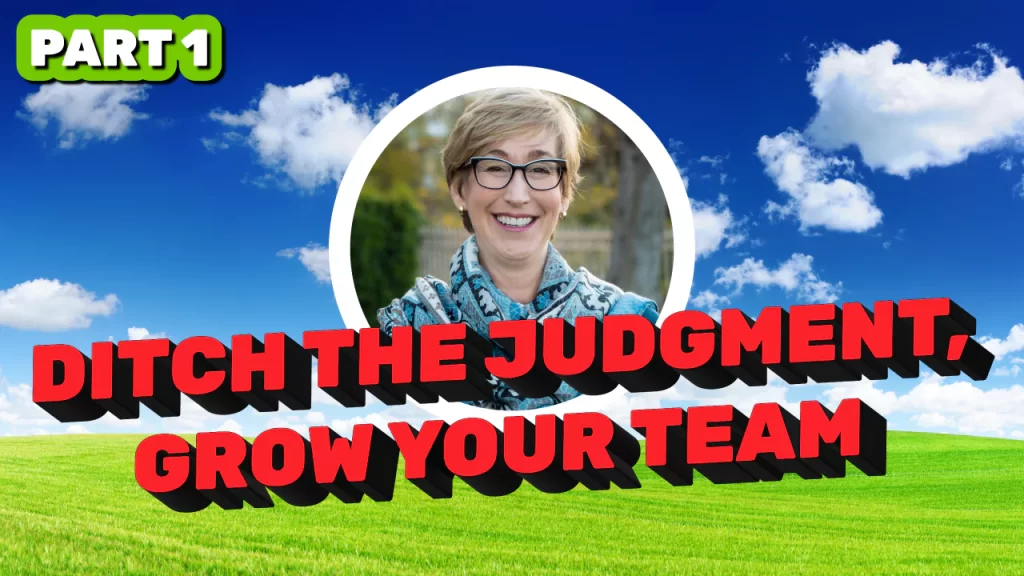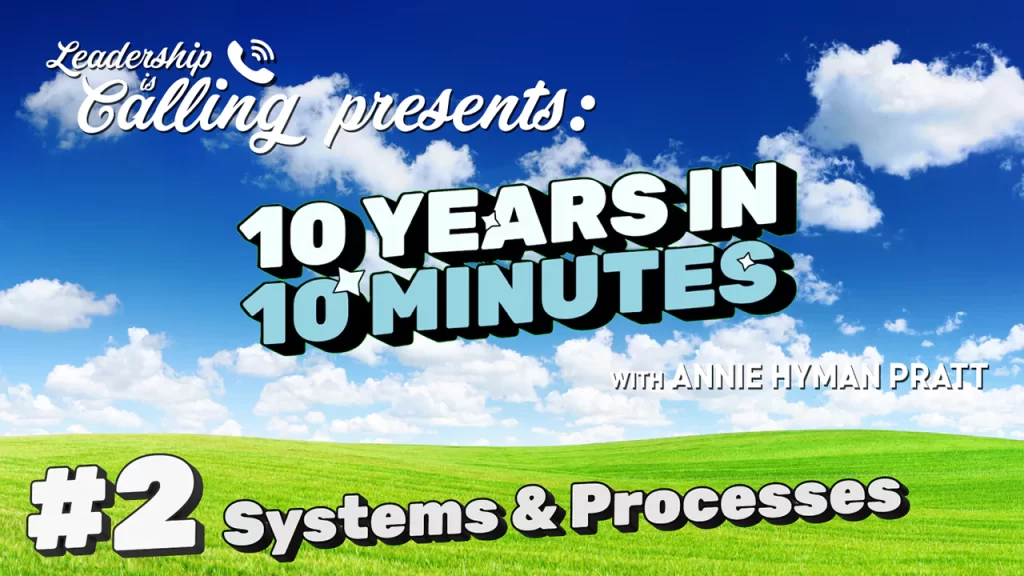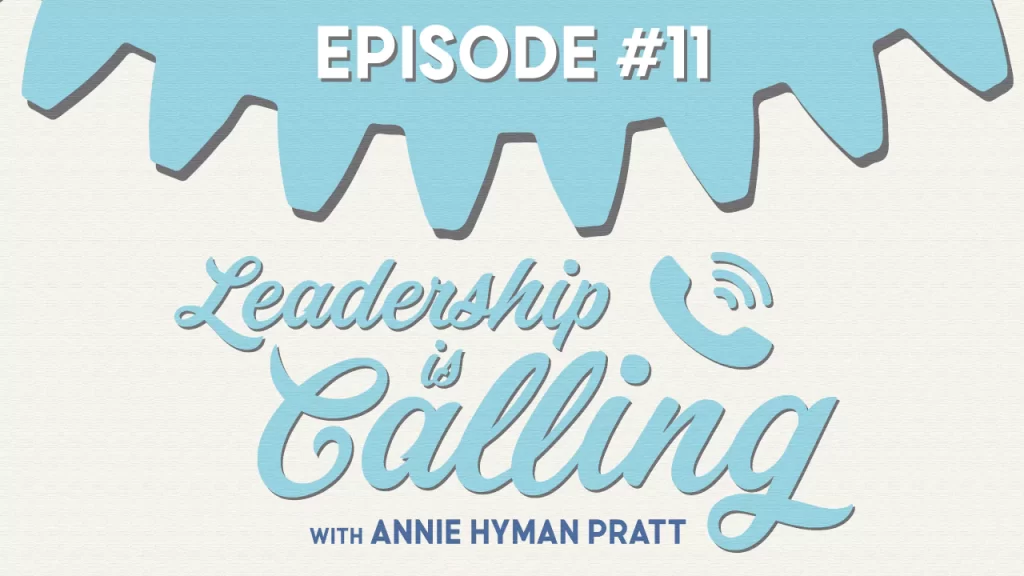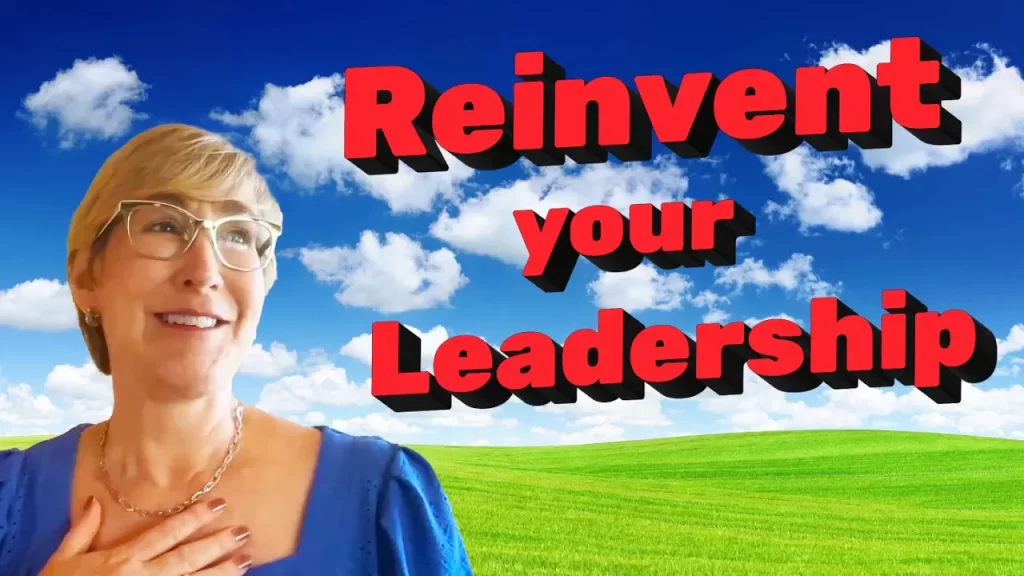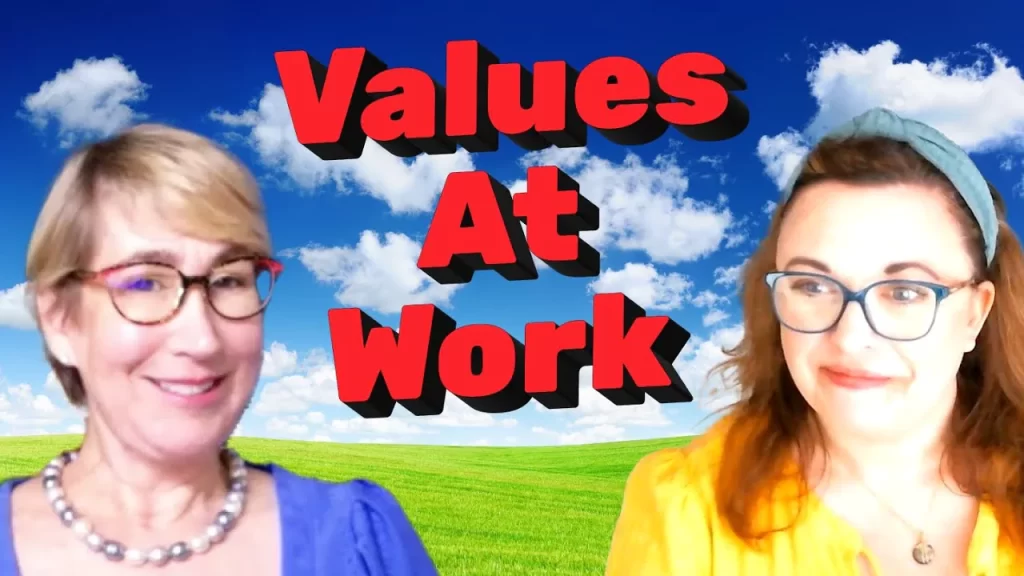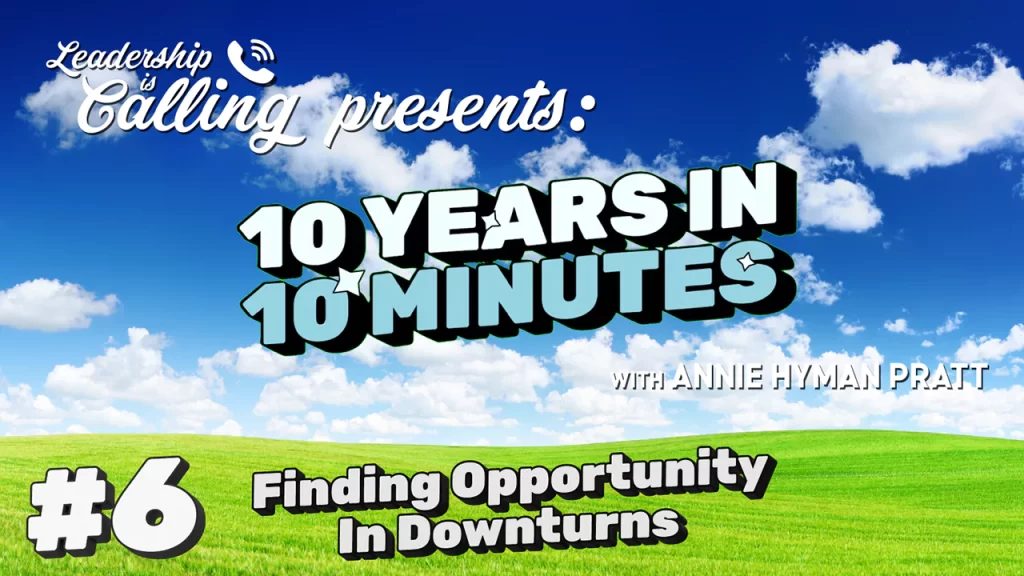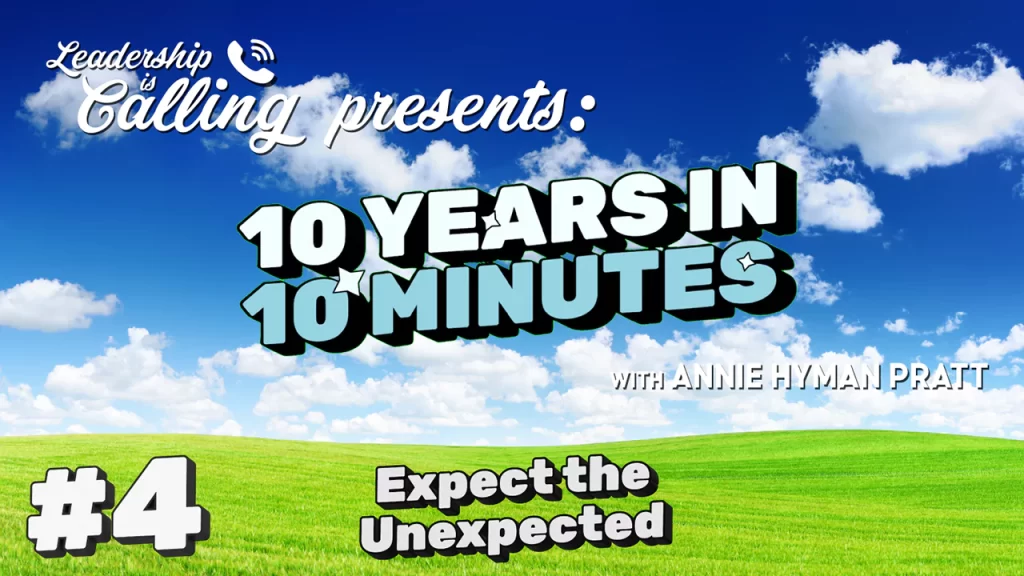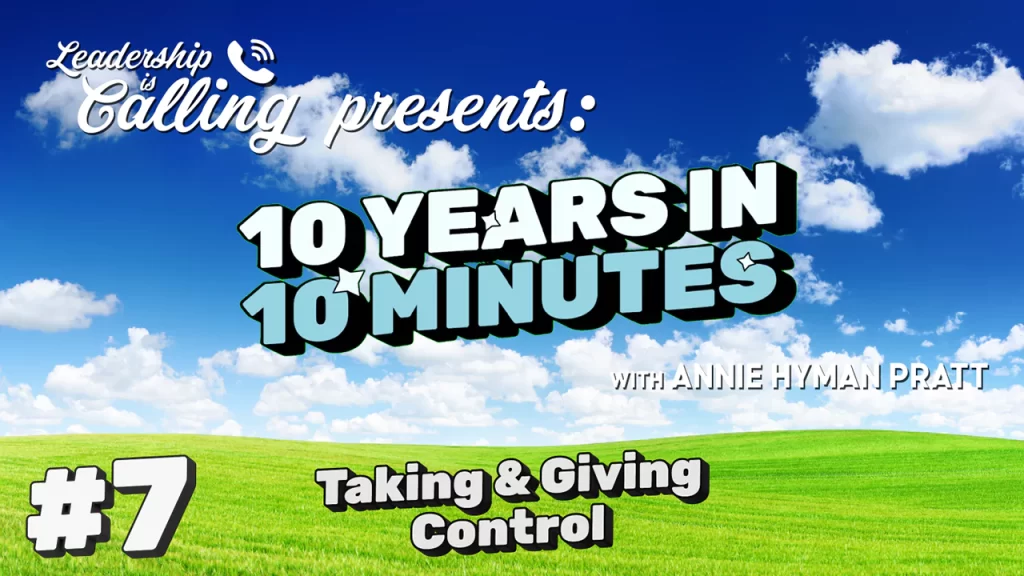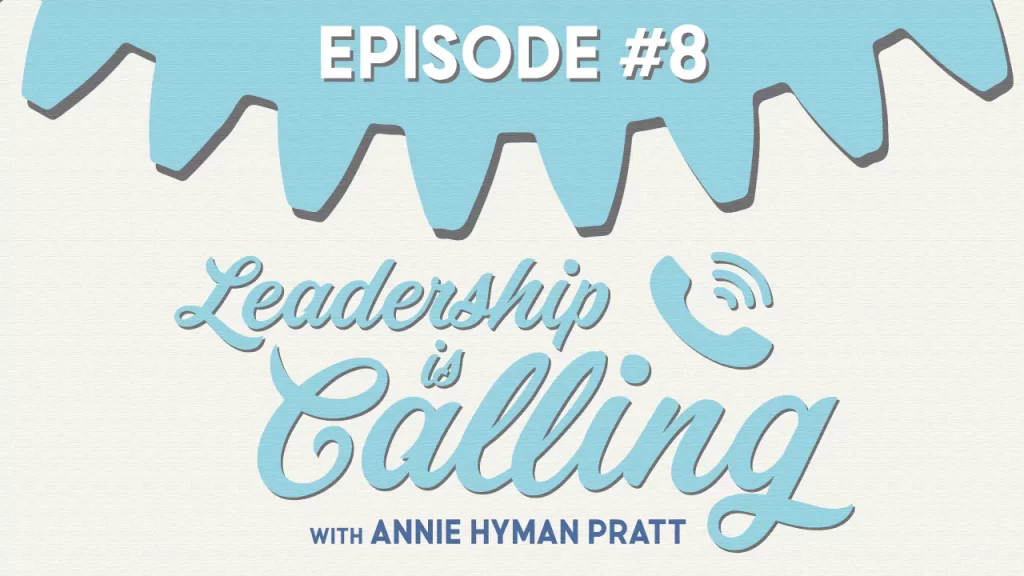Episode #05: Turn Your Vision And Mission Into Results
Leadership is Calling Episode #5
Annie Hyman Pratt
- Description
- Transcript
Turn Your Vision And Mission Into Results
“Goals need to be relevant and reasonably achievable or they have to change.” -Annie
This episode explains why concrete, achievable goals are so important for businesses to set and work towards. It provides tips for effective goal setting and emphasizes the need to re-evaluate and update goals regularly as situations change.
learn why knowing the crucial differences between vision, mission, and goals help you to…
- Avoid the trap of thinking that a strong vision is enough to reach successful outcomes.
- Create goals that are relevant and relatively achievable so you are consistently moving the needle while minimizing the potential for overwhelm.
- Understand why external drivers fuel entrepreneurial businesses to keep changing their goals and why this is key to your business success.
Key Points
- Goals should be concrete outcomes you plan to achieve, not vague visions.
- Goals must be updated as situations change to remain relevant and achievable.
- Frequent goal evaluation is key to staying on track long-term.
Related Resources
Leadership Skills: The Business Part
Leadership Development Articles: How to Navigate the Unknown in Challenging Times | How to Define Company Goals
Book: The People Part by Annie Hyman Pratt
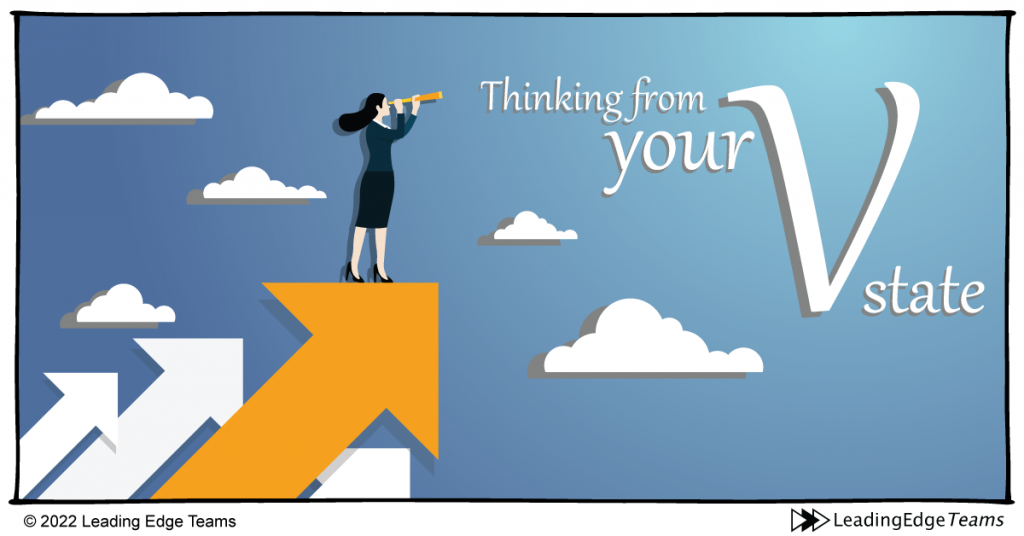
Auto-Generated Transcript – unedited version
Turn Your Vision And Mission Into Results
This is Leadership is Calling, a podcast that brings you leadership and business tips anchored in The People Part. I’m Annie Hyman Pratt, CEO and founder of Leading Edge Teams.
Hi everyone, I’m Annie Hyman Pratt, and you are listening to the Leadership is Calling podcast. And today we are talking about vision, mission and goals. Uh, each of those words, uh you know, seems like we all know the definition of them, except in business they all get kind of mushed together, which is super unhelpful. Uh, the number one complaint we get from team members and leaders in businesses is “I don’t really know what the goals are. I don’t know what we’re going for here. I don’t know what it really means to succeed.”
Um, they say things like, uh, “My boss tells me, uh, about, you know, kind of the big vision and that we want to change the world and we want to make people healthy and we want to, you know, uh, oh my gosh, serve people so they can live their best lives.” Okay, and all of those are, you know, highly visionary, uh, goals. I mean some people would talk about them as a goal, but I really think of them as a vision because the most useful way to think of a goal in business is to think about a goal as the thing, the outcome we are going to achieve, like what it looks like when it’s done. And that is the thing that we most, most, most need in business because that is the destination.
It might not be the destination for the next 10 years, but we need a good understanding of our destination for like the next 10 months, right? It’s like how we’re going to map our path to get there. We need to actually know where we’re going, what it looks like when we’re done, all right? It seems also fairly simple, but it’s shocking actually how hard it is to do that, especially in an entrepreneurial business because entrepreneurial businesses keep changing. And the reason they keep changing is because the outside landscape, the market, uh, you know, customers keep changing their preferences.
Um, uh, social media keeps changing their platforms, right? Um, technology constantly changes. Um, we, you know, uh, the economy changes. We have things pop up like a pandemic. And all of those have a bearing on what you can actually achieve. It’s like you can’t form a goal without taking into account, uh, where you want to go, what you could actually do given what’s going to succeed given the external environment and your own internal constraints, okay?
So, so what that means is when we form a goal we’re trying to form something that meets a bunch of criteria, right? Like it’s, you know, when it’s concrete so we know exactly what it looks like when it’s done. Uh, two, it’s reasonably achievable, that we can actually plan for it. We can line up the path and the steps to actually achieve the goal, right? That, um, we, you know, that we’re reasonably confident that something won’t change in the external environment to make it all go, you know, obsolete before we actually achieve it.
Uh, and we got to think about our own, uh, internal resources, like, you know, could I, uh, could my team accomplish this? Can I accomplish it? What are all the other goals we have going on right now? Can we, you know, can accomplish all of the things that we have planned? Okay, so goal setting turns out to be much harder than most, um, leaders understand. And especially because when we think of big picture goals, that’s easy to describe. But when we’re actually talking about exactly where we want to go, like let’s say I’ll use the, the travel, the travel metaphor again, but let’s say we all want to go to France, right?
Okay, so it’s like, alright France is cool. That gives us a really nice direction. Okay, but it’s sort of like, alright when do we want to go to France? Which part are we going to, you know, southern France on the Riviera? Well if we go there maybe we should go there in July, maybe not February, right? It’s like, do we want to go to Paris or do we want to go to, uh, the west coast of France and surf? I think they are surfing there. So anyhow, it’s we, we can’t, it’s not good enough to just say “Hey just head to France and we’ll sort of figure it out along the way.” We actually need to be figuring it out enough ahead of time that we can plan it, so that we could actually achieve it. And that is I think one of the most difficult things that, um, companies and, uh, entrepreneurs, uh, have trouble with today.
Especially because they have to choose some outcomes and you have to not choose others, right? One of the things that I say pretty often about decision making in business is you can’t say yes to everything. You are always deciding on something and to the exclusion of other things, right? It’s always a comparison. You’re always making the best choice out of, uh, you know, out of a range of possible choices. And we need the kind of goals that you could actually map your plans to.
All right, so let me talk about how that happens in real life or how to handle the fact, especially how to handle the fact that as things change you need to keep updating your goals. And that is one of the most important things about goal setting. And I want to make that super clear. Like if there’s one thing you walk away from knowing in this podcast it’s that goals need to be relevant and reasonably achievable or they have to change.
I know that entrepreneurs are really reluctant to change goals because they think especially if you have to lower a goal or redefine it because they can feel like it’s giving up. But the thing is, is we, you know, if we were planning a trip to France and, uh, we and we had an airplane leg that could only get us to I don’t know Canada to Quebec or something. Like if we could only get there on this flight then we have to come up with another way to do the rest of the trip. And that means that the goal may need to change.
So right now we’re going to put back that’s our midpoint, right? And then we’re going to figure out the next way to get to Paris, let’s say. So we can’t leave goals in place that are not achievable because then it leaves everybody on the team, uh, without a clear understanding of “Well now what do we do?” Right, it’s like if we don’t, you know, there are no flights to get to Paris. I don’t know, would we swim? Would we take a boat? Like those, you know, and if those aren’t reasonable options we actually are going to have to change up what the goal looks like, what the short-term goal looks like, how we’re going to re-plan the path to get there.
And so changing your goals to address a changing situation is a hundred percent needed. And I have an example, a good example from a client. So we work with, um, a lot of clients who do really great work with, uh, human beings with their health and well-being. And one of the clients that we work with is really passionate about educating people about the importance of really healthy sustainable wonderful food, right? How to eat not only for your best health but for your best impact on the planet. Okay, we love this client. What they’re, they’re, their, their mission is incredible and they’re very successful and they really want to grow.
Okay, now having said that, entrepreneurial businesses like I said earlier have to make choices. They don’t have, uh, you know, all the money in the world to do everything all at once. And so, uh, at the end of last year this particular company planned to put in place a whole new program working with schools, right? Working with schools and other kinds of institutions, schools, hospitals, um, uh, um, yeah in kind of bigger institutions that could really benefit from their work for sure. All right, so a project like that, that’s a goal, you know, let’s put that, let’s create that program, get it in place, okay, and start generating good revenue and start getting a lot of transformation to, you know, kids in school. That would be awesome.
And as they came into this year, many things changed with the external market. Um, like we suddenly came into a bunch of, uh, inflation. The, um, the market for how, uh, institutions work, how to, you know, they, they were flush with cash. Now coming into a time where the economy is shrinking, they’re more conservative. So and, um, and the way that they were going to grow in this area, when they started to really look at it, it became a big investment, like bigger than they had originally thought when they really looked into how would we grow this program, okay?
So here’s the thing, that’s something that they still would really like to do, but it’s not achievable for this year, not given what everything else that they’ve got going with their business, not given the investment requirement that it would need to be successful this year. So when they really looked at it, they could see that they should do a couple other projects instead, that they should have some other achievements instead of doing an institutional program that would have a big impact.
And a big achievement instead they’re doing a certification program. They are extending their outreach. They are offering, um, people to learn at an even higher level. It’s not the exact same kind of impact, but it’s still totally in line with their vision and their overall mission. But they had to re-look at their plans and form a goal that was appropriate, that was achievable, that got people onto the same page again for like “Yeah, you know we were gonna go for that other thing but that is just not gonna happen this year and it’s okay because we have the ability to still look at our overall vision and mission and come up with the goals that are going to drive us forward this year that are going to move us towards our, you know, our bigger 10 and 20 year, uh, overall mission, the big impact we want to have.”
But goals are about now, you know, about soon, what are we going to achieve right now? And we need those. That’s a fundamental thing in business. You can’t have the big impact without actually achieving all the many goals along the way. This is not, that’s, that’s the game of business. It is a game of goal achievement. So we’ve got to do a really good job of defining those goals, what does it look like when it’s done? What, you know, can we do? What’s our plan? What are they, what do you know, what are the milestones and the deliverables? Can’t this the best choice, the best goal and the best path to actually make us successful in the, you know, in the short, medium and long term?
We’ve got to take all that into account, but it definitely starts with really understanding that the goal, the definition of what we are actually working to achieve this year, is paramount. And that you don’t get to decide it once. You have to keep updating it. One of the ways I say it is like you have to look at your big picture and what’s changed and think “How’s it going now?” And then the next day “How about now? Did something change now?” A month from now “Are we still on track? Still looks good? Oh, a pandemic is happening. Oh, that might need some changes, right?”
We’ve got to keep looking at that big picture. Do we still have the right goals? Are we still on track? And if any of those things have changed, then we need to respond with change ourselves. And that’s, uh, what I think is most important to know about goals. And, uh, I wish you some super easy, really effective goal setting for you and your business and your team.
Be sure to like, comment and subscribe to Leadership is Calling to learn more about this episode’s topic.
Pick up a copy of my book, The People Part.
Want to learn more about how to uplevel your leadership skills and create a collaborative team that helps you drive results? Go to leadingedgeteams.com/schedule to learn more about working with us and to schedule a call.




